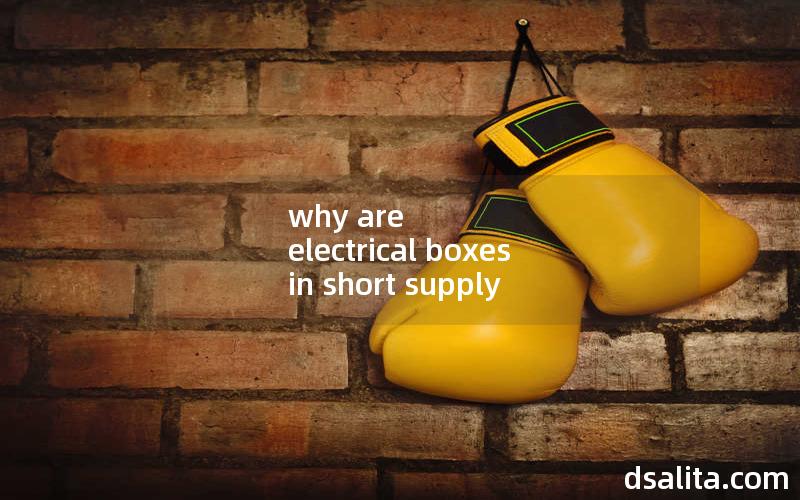Electrical boxes are an essential component in any electrical system, providing a safe and organized enclosure for electrical connections. However, in recent times, there has been a shortage of electrical boxes in the market. This article aims to explore the reasons behind this shortage, considering various aspects and factors contributing to the issue.
Increased Demand
One of the primary reasons for the shortage of electrical boxes is the increased demand in various sectors. With the rapid growth of the construction industry, there is a higher need for electrical installations, leading to a surge in demand for electrical boxes.
The rise in residential construction, commercial projects, and infrastructure development has put a strain on the supply chain, resulting in a shortage of electrical boxes in the market.

Supply Chain Disruptions
The supply chain disruptions caused by various factors can also contribute to the shortage of electrical boxes. Natural disasters, such as hurricanes or earthquakes, can damage manufacturing facilities or disrupt transportation networks, leading to delays in production and delivery of electrical boxes.
Additionally, global events like the COVID-19 pandemic have impacted the supply chain by causing factory shutdowns, labor shortages, and logistical challenges, further exacerbating the shortage of electrical boxes.
Raw Material Shortages
The shortage of raw materials required for manufacturing electrical boxes can also be a contributing factor. Materials like steel, aluminum, and plastic are essential for producing these boxes, and any disruption in their supply can lead to a shortage of finished products.
Factors such as increased demand for raw materials, trade disputes, or limited availability of resources can all contribute to the scarcity of these materials and subsequently impact the production of electrical boxes.
Increased Regulations and Standards
The electrical industry is subject to various regulations and standards to ensure safety and quality. As regulations become more stringent, manufacturers need to comply with these standards, which can lead to longer production times and limited supply.
The introduction of new regulations or updates to existing ones can require manufacturers to make adjustments to their production processes, leading to delays and a shortage of electrical boxes in the market.
Labor Shortages
The shortage of skilled labor in the manufacturing industry can also contribute to the scarcity of electrical boxes. Skilled workers are required for tasks such as assembly, wiring, and quality control, and a lack of qualified personnel can slow down production and limit the supply of electrical boxes.
Factors such as an aging workforce, a lack of training programs, or competition from other industries can all contribute to the labor shortage, impacting the availability of electrical boxes.
Increased Automation
While automation can improve efficiency and productivity, it can also have an unintended consequence of reducing the supply of electrical boxes. As manufacturers invest in automated production processes, they may initially face disruptions and lower output during the transition period.
Additionally, the need for retraining or upskilling existing employees to operate and maintain automated systems can also temporarily impact production and result in a shortage of electrical boxes.
Trade and Tariffs
Trade disputes and tariffs imposed on electrical box imports can significantly affect the supply chain. Increased import costs or restrictions can lead to a reduced supply of electrical boxes, especially if manufacturers heavily rely on imported components or finished products.
Trade policies and geopolitical tensions can disrupt the flow of goods, impacting the availability of electrical boxes and contributing to the shortage.
Conclusion
The shortage of electrical boxes can be attributed to various factors, including increased demand, supply chain disruptions, raw material shortages, regulations, labor shortages, increased automation, and trade policies. Understanding these factors can help stakeholders in the electrical industry address the issue and work towards ensuring a steady supply of electrical boxes in the future.

 Dsalita Boxing
Dsalita Boxing






